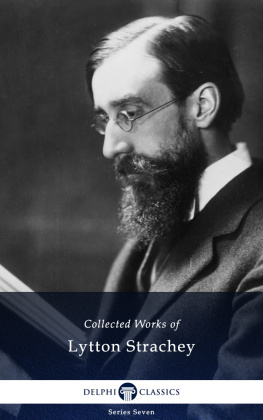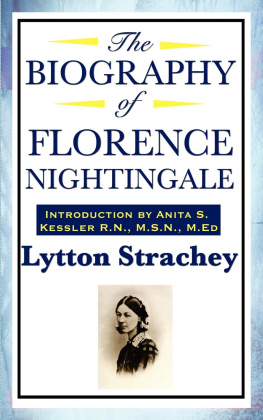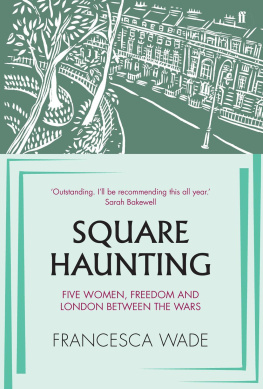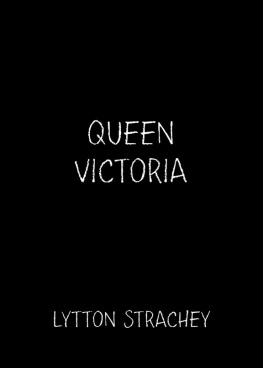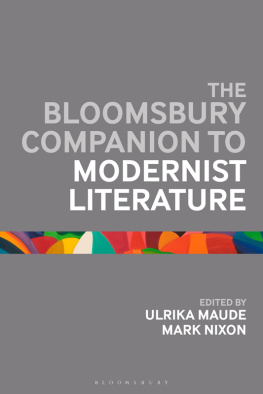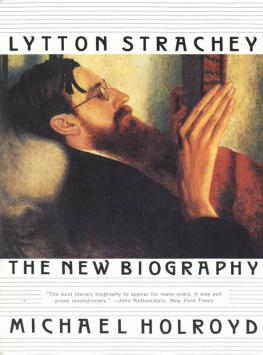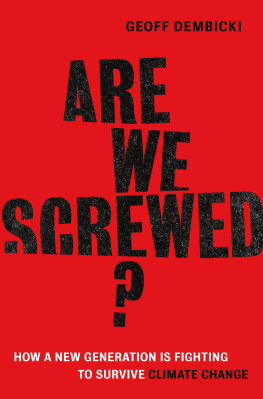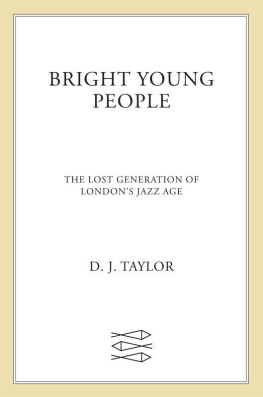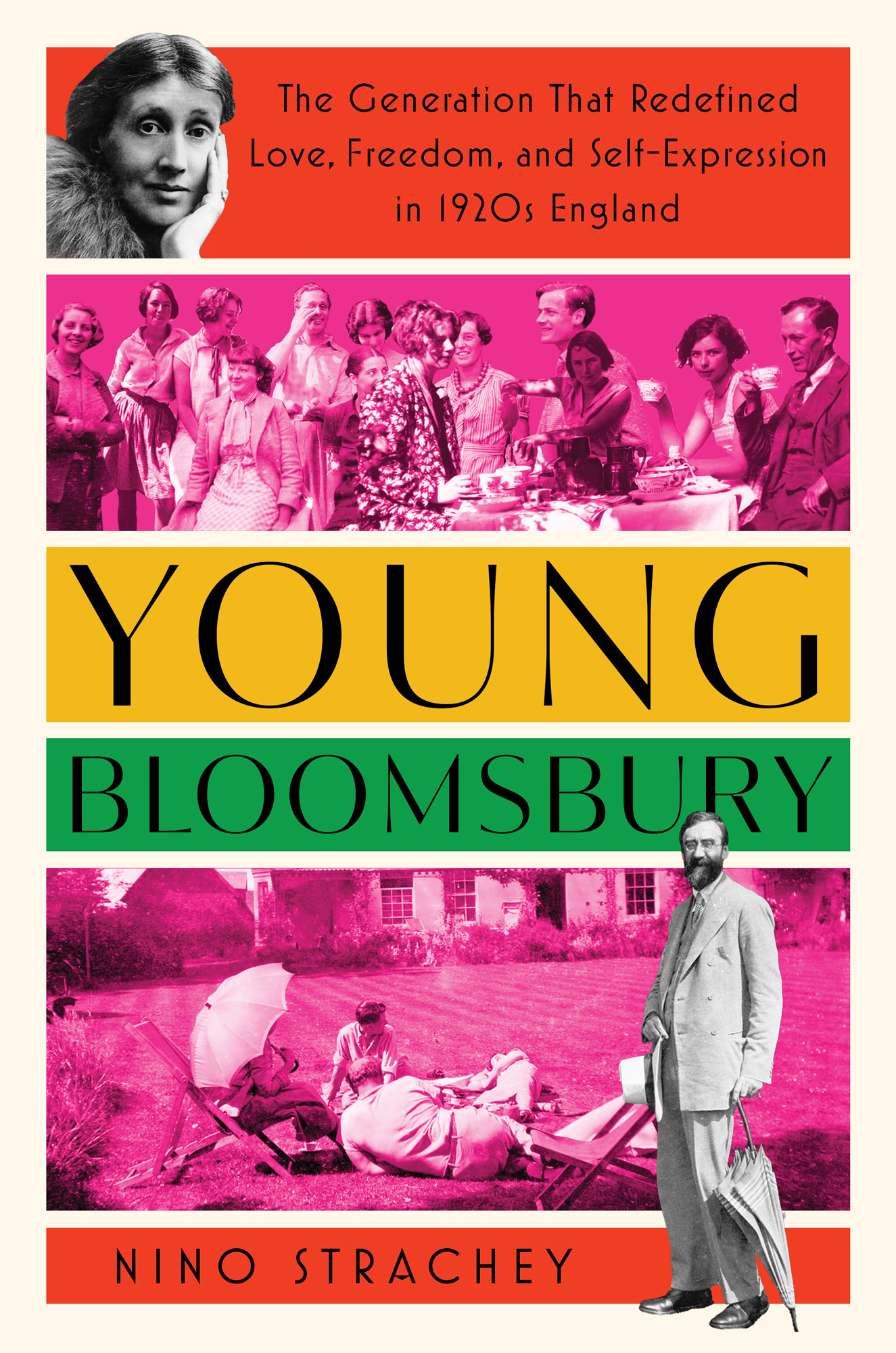Contents
Guide
The Generation That Redefined Love, Freedom, and Self-Expression in 1920s England
Young Bloomsbury
Nino Strachey
To Cas
DRAMATIS PERSONAE
OLD BLOOMSBURY
The Strachey and Grant Families
- LYTTON STRACHEY (18801932), biographer and essayist
- DUNCAN GRANT (18851978), painter and decorative artist, first cousin of Lytton Strachey (an only child, partly brought up by his aunt, Lady Strachey, as his parents were living abroad)
- Lyttons siblings and Grants first cousins:
- JAMES STRACHEY (18871967), psychoanalyst, married to ALIX SARGANT-FLORENCE (18921973), psychoanalyst, co-translators of The Standard Edition of the Complete Psychological Works of Sigmund Freud
- MARJORIE STRACHEY (18821964), writer
- OLIVER STRACHEY (18741960), cryptanalyst, married to RAY COSTELLOE (18871940), writer and suffrage campaigner
- PIPPA STRACHEY (18721968), campaigner for female suffrage
- PERNEL STRACHEY (18761951), French scholar, head of Newnham College, Cambridge
The Stephen Family
- ADRIAN STEPHEN (18831948), psychoanalyst, married to KARIN COSTELLOE (18891953), psychoanalyst
- VANESSA STEPHEN (18791961), painter and decorative artist, married to CLIVE BELL (18811984), writer and art critic
- VIRGINIA STEPHEN (18821941), novelist, essayist, and publisher, married to LEONARD WOOLF (18801969), literary editor, publisher, political theorist
Other Key Figures
- ROGER FRY (18661934), painter, art critic, curator
- MAYNARD KEYNES (18831946), economist, married to LYDIA LOPOKOVA (18911981), ballet dancer
- DESMOND M AC CARTHY (18771952), literary editor, married to MOLLY M AC CARTHY (18821953), writer
- EDWARD MORGAN FORSTER (18791970), novelist and essayist
Early Recruits
- DORA CARRINGTON (18931932), painter and decorative artist, married to RALPH PARTRIDGE (18941960), assistant at the Hogarth Press, secretary to Lytton Strachey
- DAVID BUNNY GARNETT (18921981), bookseller, publisher, and writer, married to RAY MARSHALL (18911940), illustrator
YOUNG BLOOMSBURY
- ANGUS DAVIDSON (18981980), assistant at the Hogarth Press, writer
- DOUGLAS DAVIDSON (19011960), painter and decorative artist
- EDDIE GATHORNE-HARDY (19011978), antiquarian bookseller
- FRANCES MARSHALL (19002004), bookseller, diarist, second wife of Ralph Partridge
- RAYMOND MORTIMER (18951980), journalist and literary critic
- PHILIP RITCHIE (18991927), barrister
- GEORGE DADIE RYLANDS (19021999), assistant at the Hogarth Press, literary scholar, and fellow of Kings College, Cambridge
- EDDY SACKVILLE-WEST (19011965), novelist and music critic
- ROGER SENHOUSE (18991970), translator and publisher
- WALTER SEBASTIAN SPROTT (18971971), psychologist, lecturer, and professor at the University of Nottingham
- JOHN STRACHEY (19011963), journalist and socialist politician, married to Esther Murphy
- JULIA STRACHEY (19011979), novelist, married to Stephen Tomlin
- STEPHEN TENNANT (19061987), artist and illustrator
- STEPHEN TOMMY TOMLIN (19011937), sculptor, married to Julia Strachey
Transatlantic Visitors
- HENRIETTA BINGHAM (19011968), former student at Smith College
- MINA KIRSTEIN (18961985), professor on study leave from Smith College
- ESTHER MURPHY (18971962), aspiring author, married to John Strachey
INTRODUCTION

O n a warm summer evening in 1923, Lytton Strachey and Duncan Grant headed across London for an extravagant late-night party. Lytton wasnt entirely sure that he liked the flashy American hosts, with their fancy Sunbeam car and sudden interest in all things Bloomsbury. But he knew that his partner Dora Carrington and many of his other younger friends were smitten. Beautiful, rich, and bisexual, Henrietta Bingham and Mina Kirstein exuded Jazz Age glamour. They could mix the latest cocktails, dance the latest steps, and knew all the popular show tunes.
Guests of honor that evening were dancer Florence Mills, known as the Queen of Happiness, and blues singer Edith Wilson, the Black American stars of Dover Street to DixieCharles B. Cochrans latest hit revue at the London Pavilion. Mills and other cast members danced and sang, and Henrietta hitched herself up onto the piano to play her saxophone, resplendent in a purple dress. Even the most jaded spirit must have found it hard to resist the megawatt smile of Mills; publicity photos from the show taken that summer capture a triumphant Mills raising a top hat above her shimmering bugle-beaded dress, a silver-handled cane tucked deftly under her arm.
Revelers drifted into the lamplit garden through the open French windows; jazz music lingered in the air. Strachey stayed until the small hours, amusing himself by chatting to Minas handsome teenage brother, who had sneaked downstairs to join in the fun and, intrigued by Lyttons old-fashioned appearance, had decided some gentle teasing was in order: I was urged to ask Lytton if he slept with his beard inside or outside. (Outside, he confided.)
Bingham and Kirstein had arrived in England with a fistful of society introductions. Henriettas millionaire father was a Kentucky press magnate and Minas wealthy family owned a Boston department store. To begin with, they hung out in the obvious places with the obvious people; Mina knew the daughter of Harry Gordon Selfridge, founder of the Oxford Street store, so evenings were spent dancing at the Savoy or the 43 Club. But the pair had a more adventurous spirit, seeking company where hidden sexualities might be more accepted. Months of Freudian analysis in Harley Street had failed to quench their passion for each other or their desire for partners of both sexes. A chance meeting in Bloomsbury bookshop Birrell & Garnett led to friendship with a group of writers and artists who had made sexual openness their watchword.
Lytton Strachey and Duncan Grant led the Old Bloomsbury and his work was finding its way into the papers and onto the stage. Provocation was the order of the day, and the two first cousins contributed in equal measure. Grant took a devil-may-care approach to his image, but Lyttons look was intended to inspire a reactionthe long dark hair, flowing red beard, and distinctive drooping demeanor were perfect material for caricature (and popular cartoonist Max Beerbohm duly obliged).
The Bloomsbury Group had gained a controversial reputation before the First World War; by 1923 they were becoming unforgivably successful.
Its easy to imagine the Bloomsbury Group running on a smooth path toward success, in continuous occupation of their favored territory in London. But their habitat was in fact the result of determined action: dispersed during the First World War, the friends came back together in the twenties like homing pigeons, reassembling in the streets around 46 Gordon Square, the home to which Vanessa and Virginia Stephen had escaped after the death of their father in 1904, seeking a life free from adult interference. It was here that the Stephen sisters had first got to know the Cambridge friends of their brothers Thoby and Adrian, finding new ways to connect: a commitment to honest communication between the sexes, to freedom in creativity, to openness in all sexual matters. A family of choice, they created ties of love that lasted a lifetime, embracing queerness, acknowledging difference, defying traditional moral codes.


